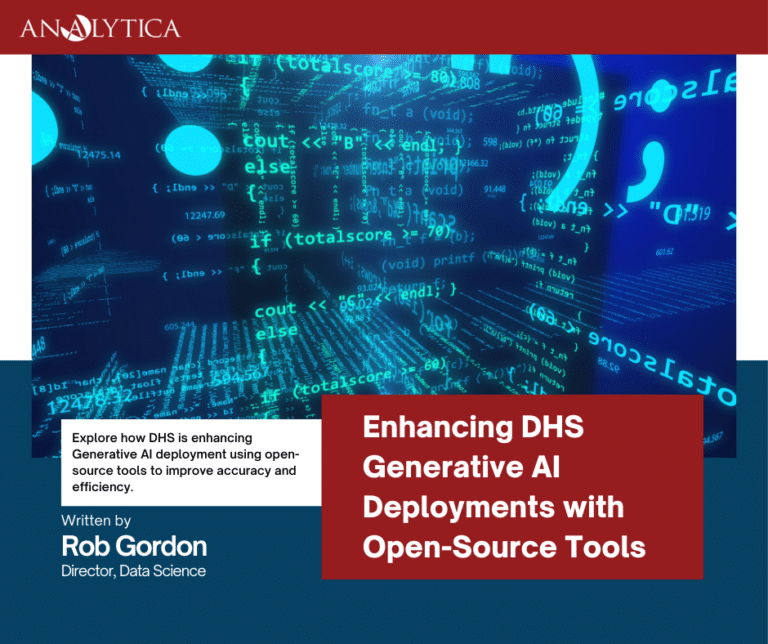Automation
Increase Organizational
Efficiency
Automation enhances productivity, quality, and operational agility, making it a valuable investment for any organization. The primary advantage is increased efficiency, as automation tools can handle repetitive and time-consuming tasks much faster than humans. This leads to significant time savings and allows employees to focus on more strategic and creative activities.

Want to know more?
Reach out to discuss how we can help with your mission
Automation
in government
The government can improve operational efficiency by replacing manual processes and tasks with automation. In support of our government clients, we have implemented automation in the following areas:
- Waste Reduction
- Self Service
- Repeatable Tasks
- Form Processing
- Report Generation
- User Support
Types of Automation
Automation is transforming government operations by enhancing efficiency, reducing costs, and improving service delivery.
Robotic Process Automation
Technology that uses software robots to automate highly repetitive and routine tasks typically performed by humans. These bots can mimic human actions such as data entry, transaction processing, and responding to simple customer service queries. RPA tools interact with digital systems and applications to execute tasks with high accuracy and speed without the need for complex programming.
Business Process Digitization
Streamline operations, improve efficiency, and enhance data accuracy. By digitizing processes, businesses can automate workflows, reduce paper-based tasks, and enable real-time data access and analysis. This shift not only boosts productivity but also supports better decision-making and fosters innovation by leveraging digital tools and platforms.
Case Management
Comprehensive approach to managing cases through software solutions designed to help organizations manage and track cases or incidents from initiation to resolution. Automated systems allow tasks to be assigned and communicated to the appropriate resource while creating transparency and clear reporting on process success.
Automated Deployments
Use of software tools and systems to automatically move code changes through various stages of the software development lifecycle such as testing, staging, and production environments. This process eliminates the need for manual intervention, ensuring that code changes are consistently and reliably deployed.
Data Processing
This process involves collecting, extracting, validating, processing, storing, and analyzing data using software and hardware systems. By automating these tasks, organizations can handle large volumes of data quickly and accurately, reducing the risk of human error and improving efficiency.
Optical Character Recognition
Convert different types of documents, such as scanned paper documents, PDFs, or images captured by a digital camera, into editable and searchable data. OCR works by analyzing the structure of the document image and recognizing the characters within it. OCR is widely used for digitizing printed texts, enabling efficient data entry, document management, and accessibility for visually impaired users.
Our Methods
At Analytica, we believe automation implementation is an ongoing service that begins with stakeholder engagement and becoming intimately familiar with how the organization performs business functions. The knowledge gained by understanding organizational goals and existing workflows allows us to identify opportunities for improvement on pain points. Through collaboration with key stakeholders, we define the existing state and design the ideal process by integrating automation solutions. We then develop the applications which perform the automated tasks and integrate them with existing systems. Once a tool is in use, we provide continued support to ensure business success and full adoption by the work force.
- Increased Product/Service Accuracy
- Reduced Stress on Workforce
- Time & Money Saving
- Scalable Business Processes
- Reduce Tedious Tasks
- Transparency & Accountability
Relevant Insights

Transforming the Citizen Experience through Digital Services
The Federal Government has renewed its focus on how they engage with the public by […]

Unlocking Efficiency and Reliability: A Guide to Application Lifecycle Management in Power Platform
In the dynamic landscape of app development, ensuring seamless transitions from conception to deployment is […]

Enhancing DHS Generative AI Deployments with Open-Source Tools
The Department of Homeland Security (DHS) has a history of leading the way in integrating […]


